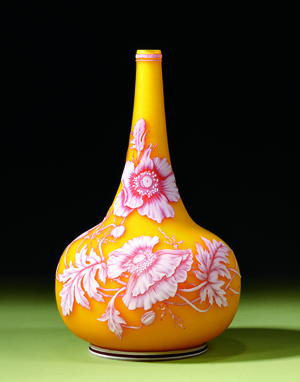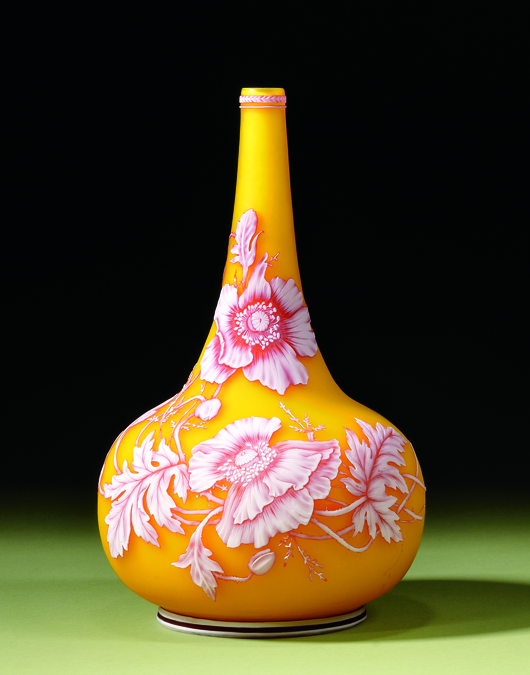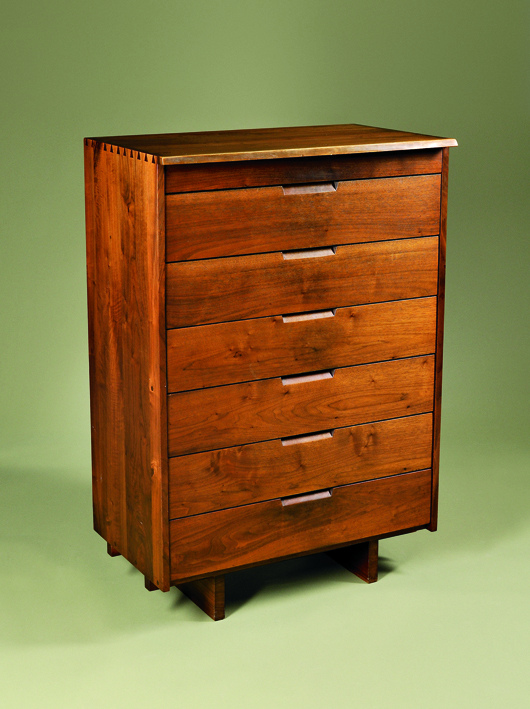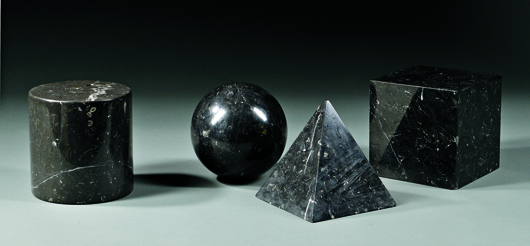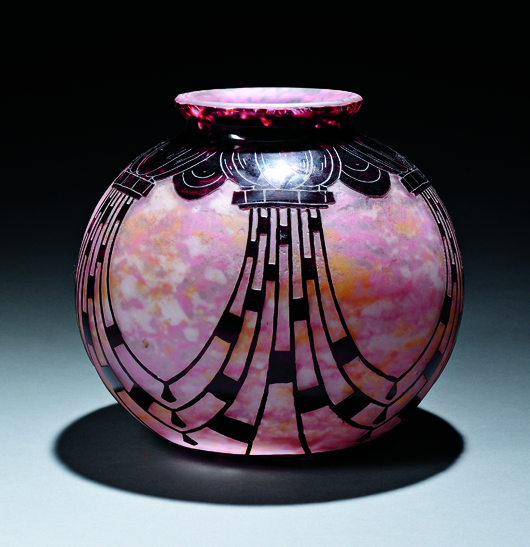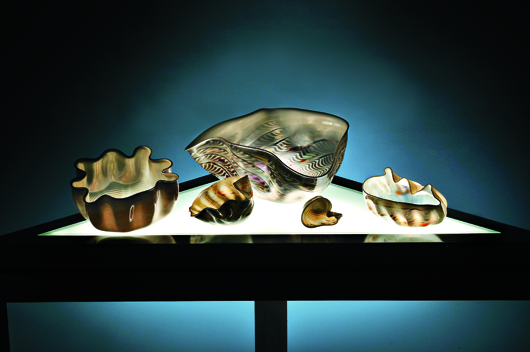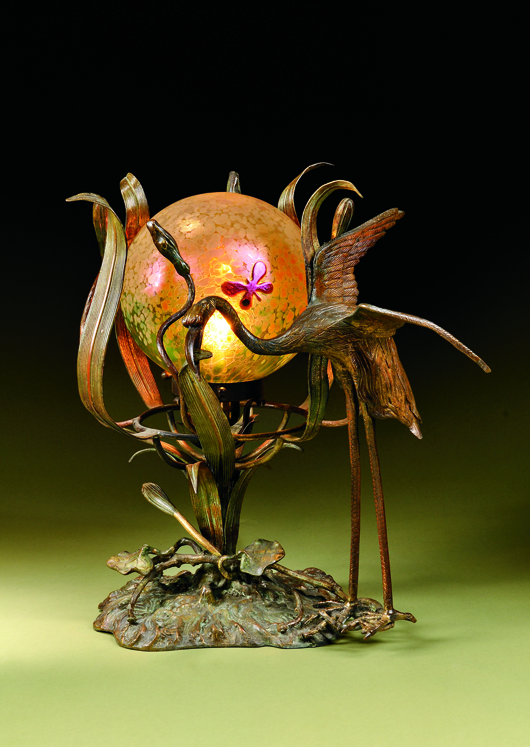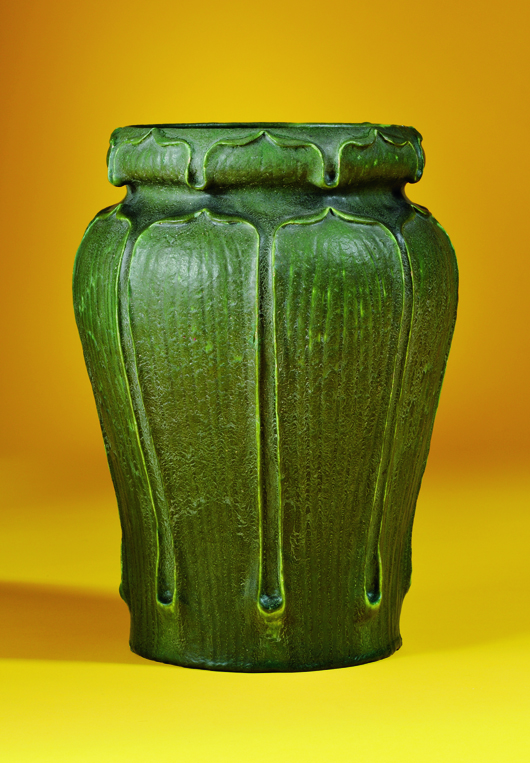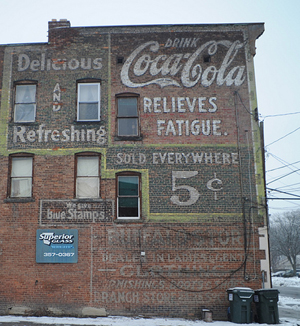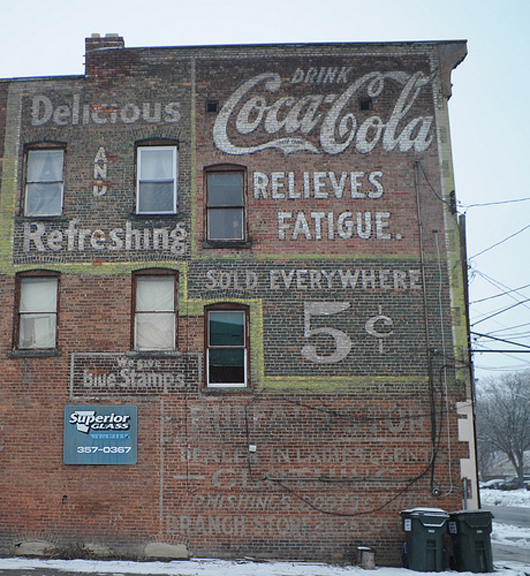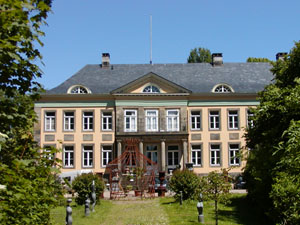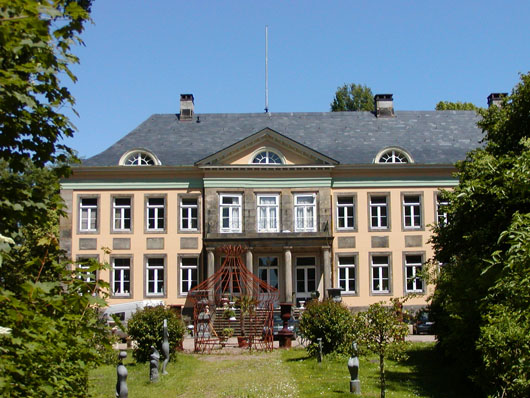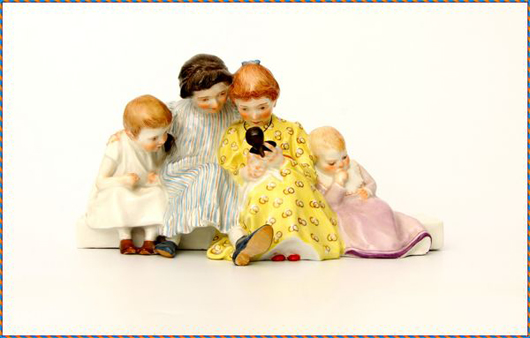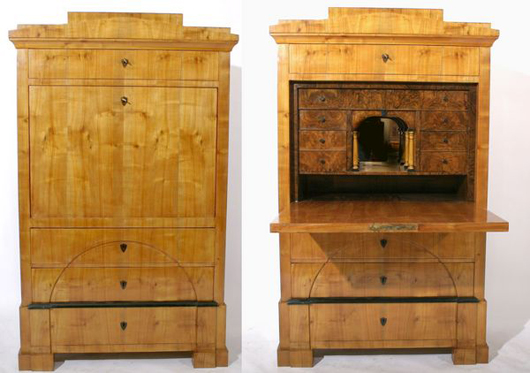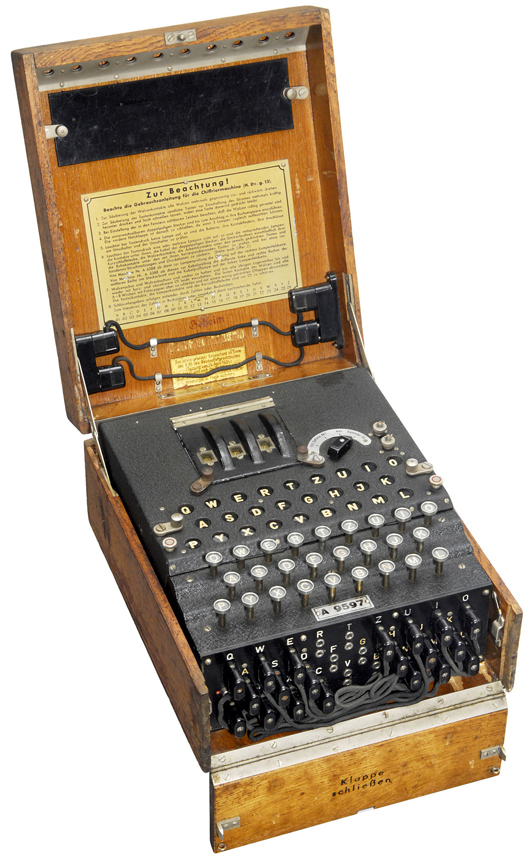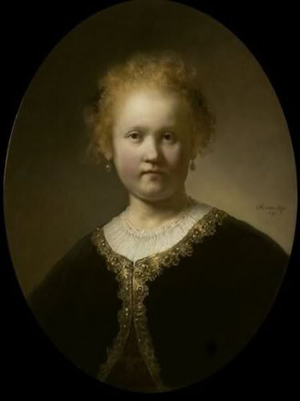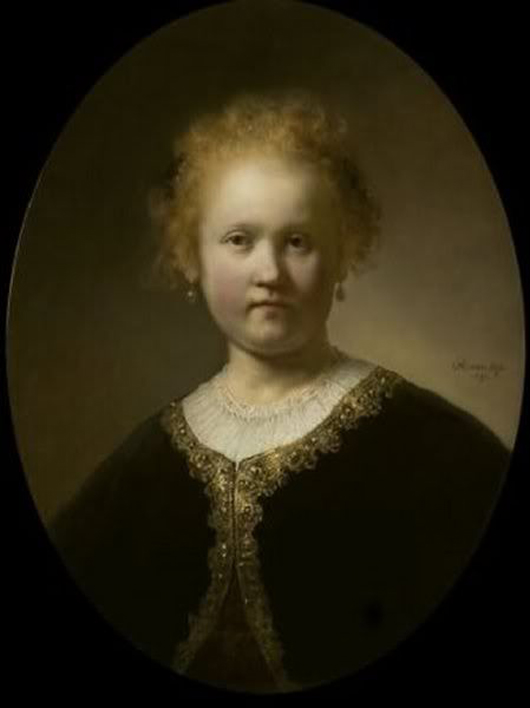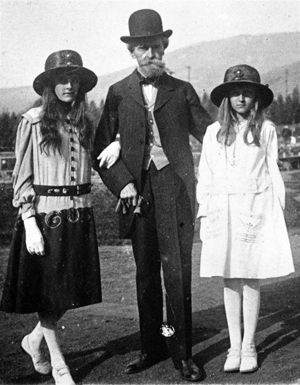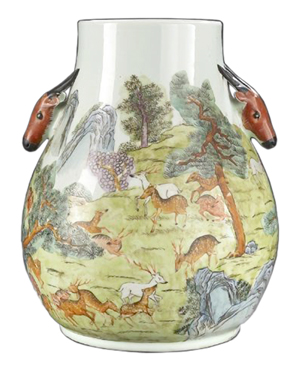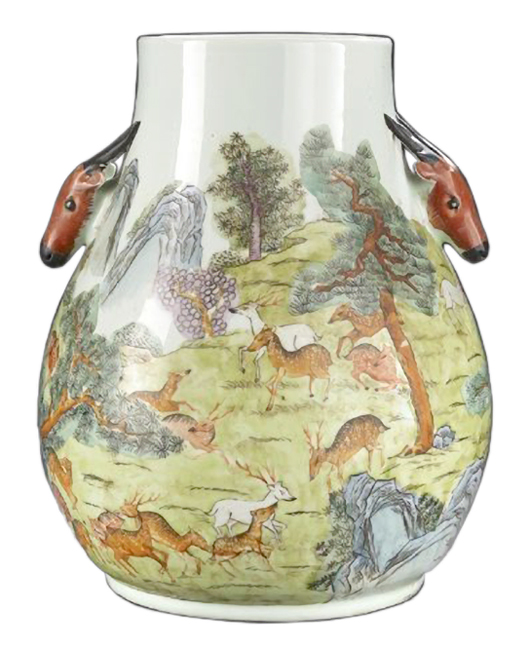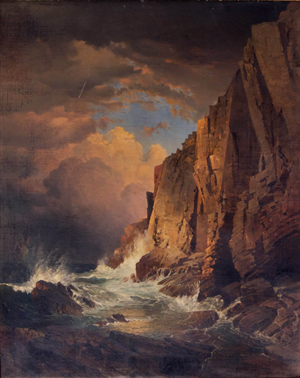
William Trost Richards (American, 1833-1905), ‘The Otter Cliffs, Mount Desert Island, Maine,’ 1866, oil on panel backed canvas. Sold amount: $235,600 (All results are inclusive of buyer’s premiums). Keno Auctions images. NEW YORK – Keno Auctions’ Important American and European Paintings sale, the first auction conducted June 12, 2012 at the company’s headquarters, achieved a total of $1.51 million, exceeding the high estimate by $300,000. The auction was 73 percent sold by lot (including after sales), with 49 buyers; 11 of whom were successful online through LiveAuctioneers.com.
The Otter Cliffs, Mount Desert Island, Maine, 1866, by William Trost Richards, which was purchased more than 60 years ago as a sleeper at a Vermont country auction by the consignor, was the sale’s highest selling lot achieving the price of $235,600 (est. $40,000-$100,000) after several minutes of fierce bidding in the room and telephone.
Jean-Paul Riopelle, a member of the Canadian artists group Les Automatistes, created the dynamic painting Folâtre in 1957. The oil on canvas clearly shows the master at the peak of his creative genius. The picture was eagerly sought by a multitude of bidders, 14 clients on the telephone and several others bidding through the Internet and in the room, before selling to an international collector for $173,600 (est. $80,000-$20,000) on site.
The auction offered a number of fresh to the market 20th century pictures from an Arizona collector, with an important contemporary work Topologie de Illusion, 1990, which fetched $99,200 (est. $50,00-$100,000). The artwork, a large scale vivid, abstract painting by renowned Latin American artist Roberto Matta, attracted an international audience with electric bidding in the room, on the telephone and online. The painting sold to a Florida-based dealer/collector on the floor.
Leigh Keno, president of Keno Auctions, said: “We are very pleased with today’s result, especially for the prices achieved by visually exciting works such as David Johnson’s Sunset on the Unadilla River, New York, 1856, which hammered at $167,400 (est. $50,000-$80,000) that a dealer bought for more than the high estimate. Morning Fishing Boats at Anchor, a masterpiece by a leader of the Hague School, Hendrik Willem Mesdag, sold for a strong $198,400 (est. $40,000-$80,000), and is a work we thought had remarkable potential and inspired competition between collectors worldwide. We are delighted to see the caliber of new and established clients in the sale who bid decisively on the best examples of artworks. We had a large number of modern and contemporary works in this auction and we are looking forward to offering more of this type of artwork in the future.”
Highlights from the Important American and European Paintings Sale included:
– Lot 18, William Trost Richards (American, 1833-1905), The Otter Cliffs, Mount Desert Island, Maine, 1866, signed and dated lower right “WM T Richards / 1866,” oil on panel backed canvas, 36 1/4 x 29 inches. Sold amount: $235,600 (Estimate: $40,000-$100,000).
– Lot 39, Hendrik Willem Mesdag (Dutch, 1831-1915), Morning Fishing Boats at Anchor, signed lower right “HW Mesdag,” inscribed with title on a label affixed to the stretcher, oil on canvas, 24 x 51 inches, sold amount: $198,400 (estimate: $40,000-$80,000).
– Lot 70, Jean-Paul Riopelle (Canadian, 1923-2002), Folâtre, 1957, signed lower right ‘Riopelle,’ oil on canvas, 23 1/2 x 28 1/2 inches. Sold amount: $173,600 (estimate: $80,000-$120,000).
– Lot 14, David Johnson (American, 1827-1908), Sunset On the Unadilla River, 1856, signed and dated lower left, “D Johnson 1856,” inscribed and titled on a label affixed to the frame, oil on canvas, 19 x 28 1/8 inches. Sold amount: $167,400 (estimate: $50,000-$80,000).
– Lot 66, Roberto Matta (Chilean, 1911-2002), Topologie de Illusion, 1990, signed lower right, acrylic on canvas, 78 x 84 inches. Sold amount: $99,200 (Estimate: $50,000-$100,000).
– Lot 22, George Henry Hall (American, 1825-1913), A Plea for Peace, 1861, signed and dated lower left “G.H. Hall/1861,” oil on board, 18 3/4 x 15 inches. Sold amount: $86,800 (Estimate: $25,000-$45,000).
– Lot 27, Hamilton Hamilton (American, 1847-1928), Sierras, 1873, signed and dated and inscribed with title lower right “Hamilton Hamilton ’73 / Sierras S****” (indistinct), oil on canvas, 18 x 29 7/8 inches. Sold amount: $74,400 (Estimate: $20,000-$40,000).
– Lot 63, Esteban Vicente (American, 1903-2001), On Space, 1987, signed, dated and inscribed with title verso “Esteban Vicente,”’ oil on canvas, 54 x 64 inches. Sold amount: $65,100 (Estimate: $30,000-60,000).
– Lot 59, Charles Demuth (American, 1883-1935), Two Men and a Woman on the Beach, 1912, signed and dated lower right “C. Demuth 1912,” watercolor over pencil on paper on board, 8 1/2 x 5 1/4 inches (sight). Sold amount: $58,280 (Estimate: $12,000-18,000).
Keno Auctions’ next sale is scheduled for Oct. 2 and includes an impressive collection of fresh-to-the market fine European and American paintings, furniture and decorative arts. Internet live bidding will be available through LiveAuctioneers.com.
Keno Auctions, a premier full-service auction house headquartered at 127 E. 69th St. in Manhattan specializes in fine art, jewelry, furniture and decorative arts, Asian works of art, and a variety of specialty categories.
For more information visit Kenoauctions.com or phone 212-734-2381.
Click here to view the fully illustrated catalog for this sale, complete with prices realized.
ADDITIONAL LOTS OF NOTE
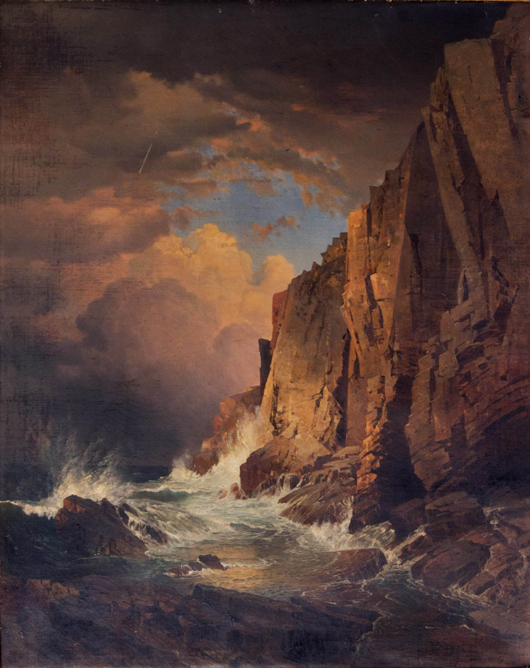
William Trost Richards (American, 1833-1905), ‘The Otter Cliffs, Mount Desert Island, Maine,’ 1866, oil on panel backed canvas. Sold amount: $235,600 (All results are inclusive of buyer’s premiums). Keno Auctions images. 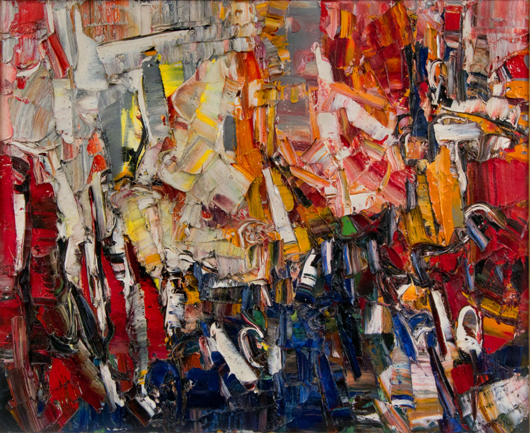
Jean-Paul Riopelle (Canadian, 1923-2002), ‘Folâtre,’ 1957. Sold amount: $173,600. Keno Auctions images. 
David Johnson (American, 1827-1908), ‘Sunset On the Unadilla River,’ 1856. Sold amount: $167,400. Keno Auctions images. 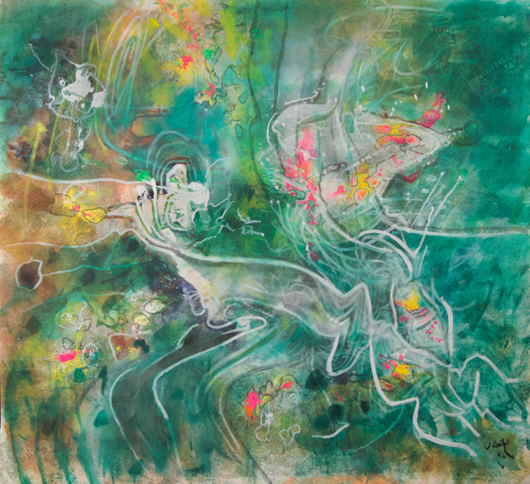
Roberto Matta (Chilean, 1911-2002), ‘Topologie de Illusion,’ 1990. Sold amount: $99,200. Keno Auctions images. 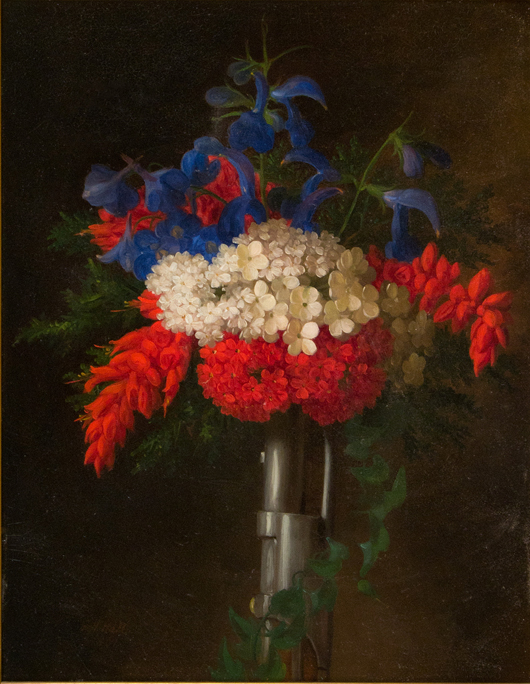
George Henry Hall (American, 1825-1913), ‘A Plea for Peace, 1861,’ Sold amount: $86,800. Keno Auctions images. 
Hamilton Hamilton (American, 1847-1928), ‘Sierras,’ 1873, Sold amount: $74,400. Keno Auctions images. 
Esteban Vicente (American, 1903-2001), ‘On Space,’ 1987. Sold amount: $65,100. Keno Auctions images. 
Charles Demuth (American, 1883-1935), ‘Two Men and a Woman on the Beach,’ 1912. Sold amount: $58,280. Keno Auctions images.




